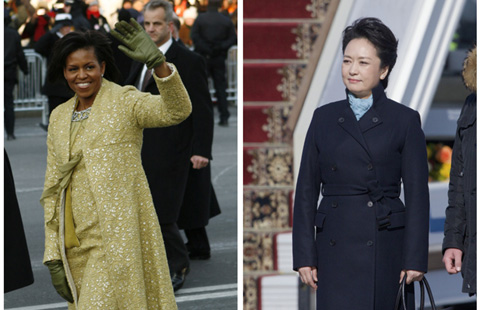Heading back to Shangri-La
Updated: 2014-03-22 07:41
By Li Fusheng (China Daily)
|
||||||||
Profile | Ester P. Marcaida
Shangri-La is finally making it home as the Hong Kong-based hotel group raises its flag on the Himalayas by opening an urban retreat in Lhasa on April 17. The brand itself, inspired by the legendary utopia James Hilton wrote about in his 1933 novel Lost Horizon, is widely believed to be somewhere on the Qinghai-Tibetan plateau.
The Shangri-La Hotel, Lhasa will be a luxurious home base for those who wish to explore dramatic Tibetan culture and scenery, says general manager Ester P. Marcaida, adding that international media has called it one of the most anticipated openings in 2014.
Boasting 289 rooms, some of which offer a view of the Potala Place, it is the largest five-star hotel in Lhasa.
Marcaida herself is already immersed in local culture. She wears a Tibetan necklace, and says guests on arrival will be greeted with the kadak, a ceremonial silk scarf, served traditional buttered tea and presented with a good luck token, a nine-eyed bracelet made of yak fur.
In the lobby is a 6.5-meter chandelier in the shape of a prayer wheel draped in flowing red fabric. Guest rooms also feature traditional Tibetan furniture and furnishings like turquoise, decorative metals, floral patterns and auspicious symbols.
|
The Shangri-La Hotel, Lhasa will start operations on April 17, with Ester P. Marcaida at the helm. Provided to China Daily |
It is also easy for guests who want to learn some simple Tibetan because nearly half of the 300 staffers are Tibetans who speak and write both Tibetan and Chinese.
Marcaida is also teaching some of them English as Lhasa enjoys a high reputation among international tourists, although she expects the majority of her guests to be Chinese visitors.
"They are making progress and can speak some English now," Marcaida says, proudly.
She says the hotel is also taking in some students from local universities as interns and those who do well will be offered jobs when they graduate in June.
Guests can also enjoy traditional Tibetan food prepared by local chefs at the hotel's Shambala restaurant, a signature outlet that is calm and cozy with lighting reminiscent of the oil lamps that Buddhist monks carry. The walls are draped with handmade carpets.
The hotel is ever-considerate, and guests in need can make use of an oxygen lounge in case of altitude sickness in the first days before they adapt.
Marcaida is quick to assure that most people, including herself, will not feel uncomfortable.
She had worked in the Maldives, some 5 meters above sea level, before coming to Tibet last year. One of her tips for guests with altitude sickness symptoms such as slight headaches is to take it very easy.
"Tibet is a place where people learn to slow down. Locals do everything slowly. And as you slow down you can better savor the essence of life."
Like most other people, Marcaida says the three major things in her life used to be sleeping, working and shopping.
That has changed, she says.
As the Potala Palace is within walking distance, she wanders there on weekends to see people pray, strolls on the streets to watch Tibetan women weaving carpets and simply enjoys the blue sky.
Tibet's beauty is beyond words and "you have got to come to learn its charm by yourself", she says with a welcoming smile.
lifusheng@chinadaily.com.cn
(China Daily 03/22/2014 page13)

 Gorgeous Liu Tao poses for COSMO magazine
Gorgeous Liu Tao poses for COSMO magazine
 Post-baby Duchess
Post-baby Duchess
 Victoria Beckham S/S 2014 presented during NYFW
Victoria Beckham S/S 2014 presented during NYFW
 'Despicable' minions upset Depp's 'Lone Ranger' at box office
'Despicable' minions upset Depp's 'Lone Ranger' at box office
 'Taken 2' grabs movie box office crown
'Taken 2' grabs movie box office crown
 Rihanna's 'Diamonds' tops UK pop chart
Rihanna's 'Diamonds' tops UK pop chart
 Fans get look at vintage Rolling Stones
Fans get look at vintage Rolling Stones
 Celebrities attend Power of Women event
Celebrities attend Power of Women event
Most Viewed
Editor's Picks

|

|

|

|

|

|
Today's Top News
China Southern announces Guangzhou-NY flight
Michelle Obama meets with students in Beijing
Alibaba buys stake in Silicon Valley
Issuing 'dim sum' boosts China ties
A long musical journey to Carnegie Hall
Cathay Pacific adds HK-NJ flights
Michelle Obama starts landmark trip
Australia resumes search for MH370
US Weekly

|

|








